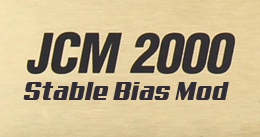London City Schematics
The London City brand was created in the summer of 1969 by the Dutch Sound Experience (DSE) when a music shop (de Waal) in Amsterdam wanted a cheaper alternative for the expensive Marshall amps of that time. The London City 100W heads were schematically very close to the Marshall model 1959 JTM100 Super Lead amps, but they were built using cheaper parts. The preamp section and the phase inverter (PI) are almost identical to those of the Marshall JTM100 amp, but the power stage was taken directly from the Philips EL34 datasheet.
At first the amps were grey, sometimes very dark grey. Amps from this time were the DEA50’s and DEA100’s. Later, probably in 1971 or 1972, the switch was made to the very characteristic turquoise colored amps. Examples of these amps are the DEA70 MkV and the DEA130 MkV. Even later in the early 1980’s, shortly before the demise of London City, the amps were made in black. The very early DEA100 amps had plexi panels and logo’s. Quite soon, however, these were changed to the well known brushed aluminium panels and logo’s. The rear panels remained plastic (not plexi) for a much longer time. As the covering of the amps were usually bought at the local Waterloo Plein market, this tended to vary from roll to roll, depending on what was available at that moment.
A competing music store also wanted to sell these London City amps. These amps were branded as Power City. They were identical to the London City amps though. The Power City amps were produced in grey longer than the London City amps. In fact I’ve never seen a turquoise coloured Power City amp, so maybe these amps were made only in grey.
These amps were hand built on an aluminium U shaped chassis, terminated with two blocks of wood at both ends of the chassis. I’ve also seen some London City amps with a steel chassis. As costs had to be kept low, build quality was mediocre. If, for example, the 22nF capacitors were out of stock then 27nF caps would be used instead, no questions asked. You’ll find many schematic details differing from one amp to the next due to this “policy”. This wasn’t much different from the early days of Marshall and probably many other “young” amplifier brands.
These amps do have the potential to sound very good though. After a retube, recap, fitting the screen grid resistors on the tube sockets and changing the power amp section to Marshall specs, and some other tweaks, these amps really do rock! Move over Jimi… ;o) The early London City amps used the excellent sounding Belgian Prova transformers. Later on DSE switched to cheaper Italian transformers.
I’ve recently had a Castle top in the shop. This amp too originated from the London City stable. The build quality and the transformers were better, and instead of 4 inputs and two channels this amp has two inputs and one channel with an extra distortion control. It also sported an extra 4 ohm output and a P.A. line level output. The cabinet was black and the chassis was painted black and had a turquoise colored imprint.
The London City 4×12″ cabinets were fitted with the Celestion G12H30 T1534 bass speakers. The 2×15″ Super Bass cabinets were fitted with RCF speakers.
DSE London City info.
![]() DSE price list from 1978 in Dutch guilders.
DSE price list from 1978 in Dutch guilders.
![]() DSE brochure, part 1.
DSE brochure, part 1.
![]() DSE brochure, part 2.
DSE brochure, part 2.
Logo’s
![]() London City logos. The first logo is from the grey period, the second logo is from the green/cyan period, the third logo was never used and the fourth logo is from the black period.
London City logos. The first logo is from the grey period, the second logo is from the green/cyan period, the third logo was never used and the fourth logo is from the black period.
DEA50 MkIV Super Amplifier
This was the 50W version of the DEA100.
DEA70 MkV Super Amplifier
![]() Schematic of DEA70 (courtesy of Ilppo Nousiainen).
Schematic of DEA70 (courtesy of Ilppo Nousiainen).
DEA100 MkIV Super Amplifier
This was the amp with which it all started!
![]() Early amp schematic. Note the odd input resistors and the lack of bright cap. Later DEA100 amps were the same as the DEA130 amps.
Early amp schematic. Note the odd input resistors and the lack of bright cap. Later DEA100 amps were the same as the DEA130 amps.
DEA130 MkV Super Amplifier
![]() Schematic. Note that this amp is the same as the DEA100.
Schematic. Note that this amp is the same as the DEA100.
Thanks to Nico van Gijn for most of this info and the pictures!


